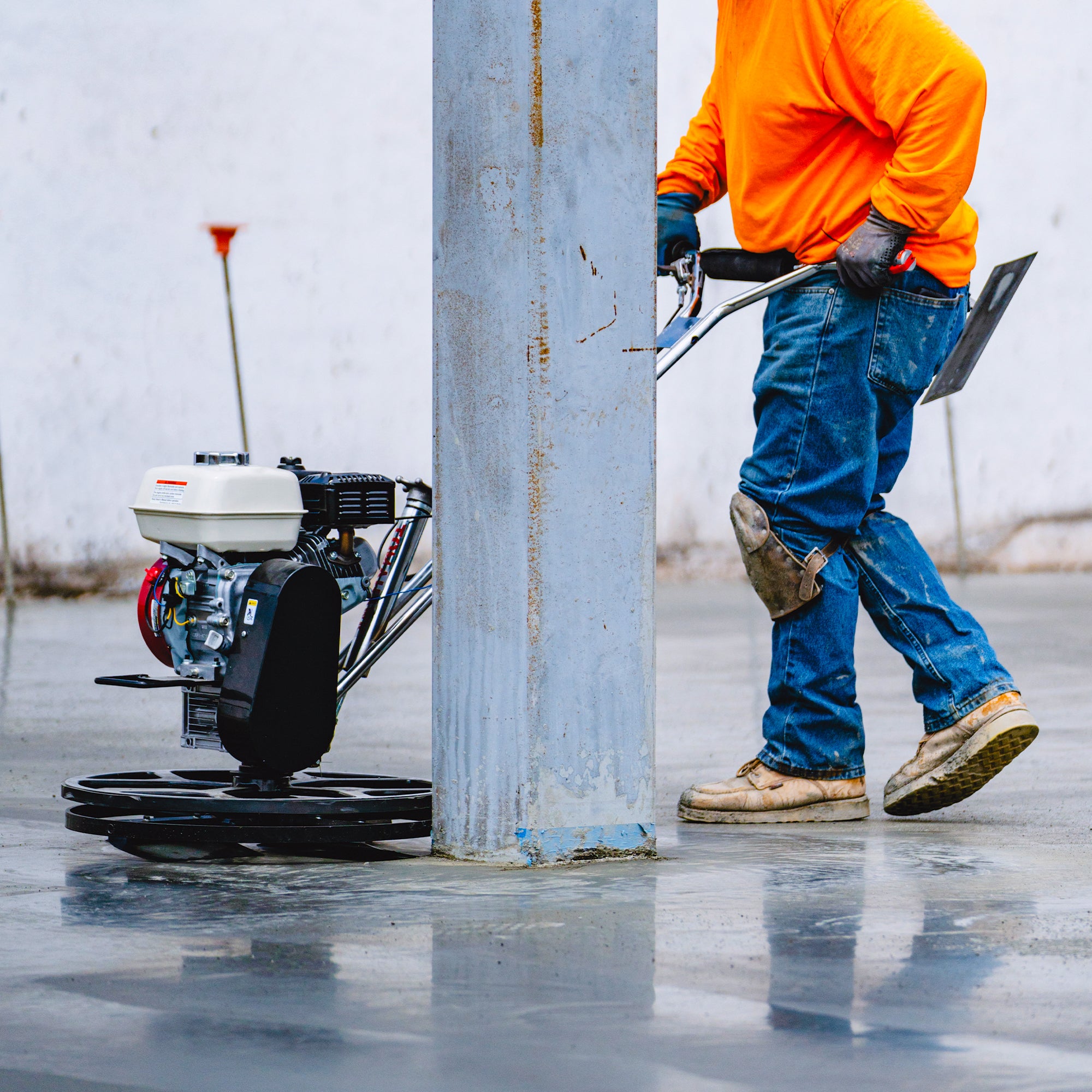In the intricate world of construction, mastery of tools and techniques can mean the difference between good and exceptional results. When it comes to concrete finishing, power trowels are the go-to equipment for achieving smooth surfaces. While basic troweling techniques are essential, advanced methods can elevate your finishing game to a whole new level. This blog explores advanced techniques for power trowel finishing excellence, helping you achieve outstanding results that stand out in the world of construction.
1. Timing is Everything
Timing is a critical factor in power trowel finishing. The initial floating process should begin once the concrete surface has firmed up enough to support the weight of the trowel without causing excessive depressions. Starting too early can result in premature surface tearing, while starting too late may make it challenging to achieve a smooth finish. Mastering the art of timing is the first step towards achieving exceptional results.
2. Proper Blade Pitch and Angle
The pitch and angle of the trowel blades significantly affect the quality of the finish. A blade pitch that's too aggressive can dig into the surface, causing gouges and unevenness. On the other hand, a blade pitch that's too shallow might not provide adequate compaction. Finding the right balance and maintaining a consistent blade angle is crucial for achieving a smooth and uniform finish.
3. Overlapping Passes
While overlapping passes might seem like a basic technique, mastering the art of overlap is key to achieving even compaction and a flawless surface. Overlapping the trowel passes by around 1/3 to 1/2 of the trowel's width ensures that no areas are missed, creating a consistent finish across the entire surface.
4. Floating vs. Burnishing
Understanding the distinction between floating and burnishing is essential for achieving different surface finishes. Floating involves using the trowel at a higher angle to achieve initial compaction and evenness. Burnishing, on the other hand, involves gradually lowering the angle of the trowel to create a smoother and more polished finish. Knowing when and how to transition from floating to burnishing can result in exceptional aesthetic outcomes.
5. Multiple Blade Configurations
Power trowels are available in various blade configurations, including float, finish, and combination blades. Experimenting with different blade types can help you achieve various textures and finishes. Combination blades, for instance, offer versatility by allowing you to both float and finish in a single pass.
6. Circular and Random Patterns
While the traditional back-and-forth technique is effective, experimenting with circular and random patterns can yield unique and eye-catching results. Circular patterns can break up monotonous finishes, while random patterns can help blend different areas seamlessly.
7. Addressing Blemishes
No concrete surface is entirely free of imperfections. However, advanced trowel techniques can help minimize and even conceal blemishes. Techniques like crosshatching (creating diagonal trowel passes) can help eliminate trowel lines and produce a more uniform appearance.
8. Maintaining Control
Maintaining control over the power trowel is vital for achieving precision and consistency. Focus on steady, even movements, and avoid sudden changes in direction or speed. Maintaining control ensures that the trowel's blades interact with the surface in a controlled manner, resulting in a polished finish.
Mastering advanced power trowel techniques requires practice, patience, and a keen eye for detail. By honing your timing, blade pitch, overlap, and other nuanced aspects, you can achieve concrete finishing excellence that sets your work apart. Beyond the basics, these advanced techniques empower you to create surfaces that are not just smooth and durable but also aesthetically remarkable. In the ever-evolving world of construction, going beyond the fundamentals can lead to results that speak volumes about your dedication to craftsmanship and quality.










